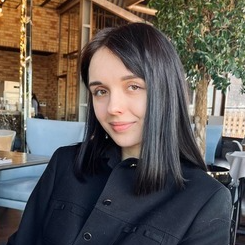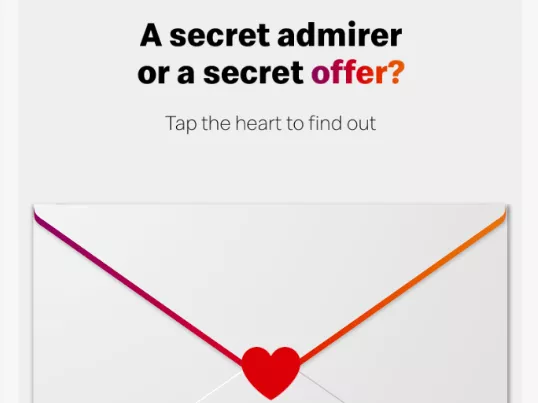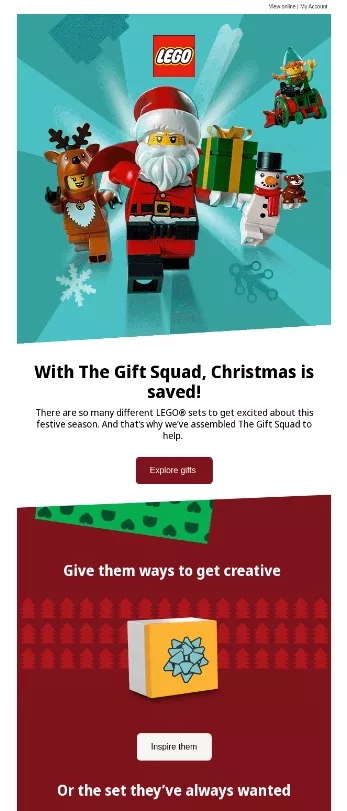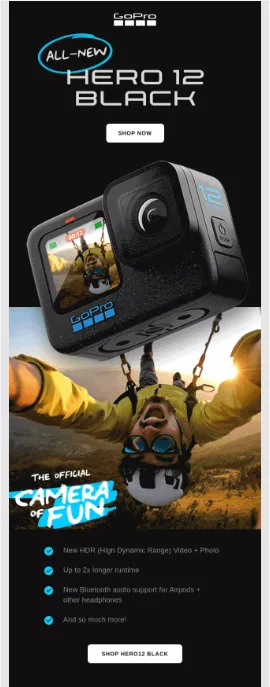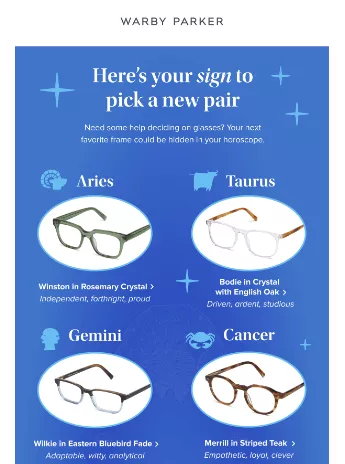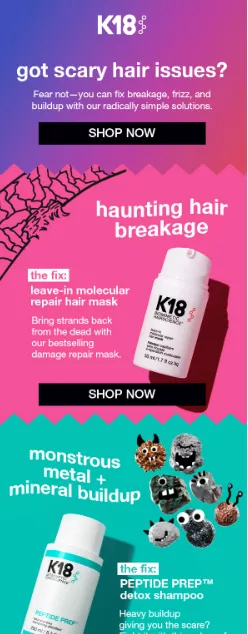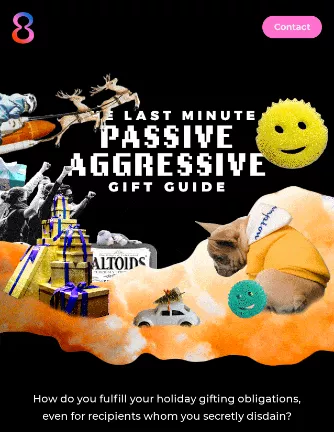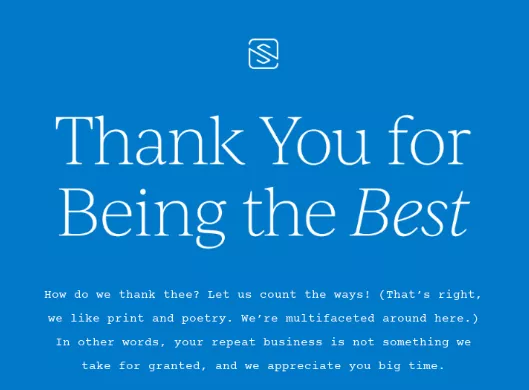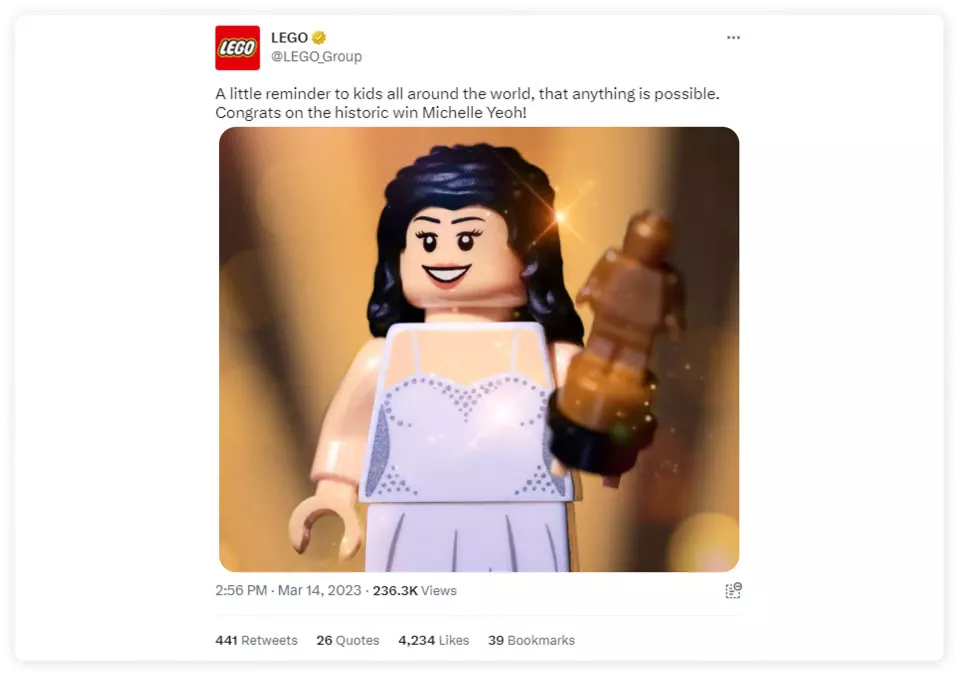The Creative Side of Retention Marketing: How to Create Inspired Emails that Captivate Your Subscribers
Customer retention is becoming a real challenge these days; not only is their fierce competition but audiences are being bombarded with huge amounts of content every day. If you send just one message at the wrong time or with irrelevant content, you will lose subscribers.
Creativity can be a real asset in an industry where every click and open counts. In this article, I'll take a closer look at how creativity can breathe life into your strategies and be a powerful catalyst for retention marketing.
Creating a unique and eye-catching newsletter
The first step is to study and analyze your target audience. A thorough understanding of their needs, problems, and expectations is the basis for effective communication. Your content should be a response to their needs.
People tend to read and watch what they want to read and watch. So, how do you make sure your brand's newsletters are on that list?
1. Strive for emotional impact
Messages should evoke emotions, reflect values, and support common interests. This strengthens relationships and brings your brand closer to consumers' hearts. Does that sound a lot like real relationships? It is. Try the following methods:
- Use emotional language. Include words that evoke emotions, such as exciting, joyful, or amazing.
- Create personality. Give your brand character and personality. This could be a friendly and thoughtful conversationalist or an elegant and stylish professional — it depends on the nature of your audience.
- Build trust. Provide evidence of the effectiveness of your products or services. Reviews, testimonials, guarantees, and other proofs of quality will make a difference.
- Create an open dialogue. Communicate with your audience, ask questions, and listen to their requests and opinions. This will help you better understand their needs and create products or services they will truly value.
McDonald's knows how to create emotionally compelling content.
The Lego brand communicates in its own way by alluding to magical worlds with a Christmas kidnapping, protagonists, and a happy ending. Or rather, it is made up of construction set pieces. This email represents the team of Santa's helpers who are in a hurry to deliver presents.
2. Strengthen your brand through creativity
It is very important to have your own voice because that is what makes you recognizable. Injecting some creativity into your design and content will add charisma and showcase the brand’s uniqueness.
- Stand out from the rest using bright colors, unusual shapes, and structures. The design should reflect the characteristics and values of your brand.
- Mix multimedia elements. Try to include videos, GIFs, and interactive graphics in your emails.
- Be consistent. Ensure that your creative approach to design and content is consistent across all your emails and marketing materials. This will help to maintain brand unity and perception among your audience.
Here is an example of a message that is 100% in line with the nature of the product.
The TTSWTRS brand also shows its character through its content.
Their emails are unlike those of other clothing stores, even during massive seasonal events such as Halloween.
3. Personalize your email newsletters
Use individualized messages, recommendations, and offers to create newsletters that are special for each customer. Make it clear that you know the person on the other side of the screen with a quip, a joke, or a hint.
This email could have been nominated for the most boring email in history: a selection of products on a white background and three opening sentences. But it won't be because it's the idea that makes the difference.
Obviously, it's not a good idea for tech companies to categorize products by zodiac sign. Still, if it's a mass-market product whose audience is comfortable with this kind of interactivity, it may be an interesting way to connect with your readers.
This email can be seen as a case study in personalization. Even if we know nothing about the customer, it still seems personalized. After all, everyone has a zodiac sign, and when they are listed in one email, the customer only has to choose theirs while paying attention to other products.
You can also use this method to collect customer information at the same time.
For example, a women's clothing store is planning a mailing list. The email offers several images of movie actresses, influencers, or just examples of clothes with a suggestion to choose the one you like.
The user then receives a message with a selection of your brand's clothes in the style they have chosen. Such an email is interesting for the subscriber and useful for the business, and you can create segmentation based on the customer’s choice.
Okay, but what if you already know all this and you're thinking about a new email, and the only personalization idea you have is %FIRSTNAME|Dear Customer%?
Analyzing the best practices in retention marketing
The easiest solution when you need a here-and-now decision is to turn to services that select and store the best examples of email campaigns:
The goal is not to find a great email and make a similar one, but to see an interesting idea and give it a second life. For example, you may have liked this newsletter visually.
Now let's analyze the components that made a positive impression:
- bright blocks;
- non-standard shape of the blocks;
- the use of different fonts and outlines on images;
- the addition of graphic elements that diversify the product selection.
Accordingly, you can create an email that uses these components while adding your vision, specifics, and brand style.
You may get something like this.
The only problem is, don't you feel like you've seen this before? Maybe similar messages hit your inbox every day?
It’s not bad, but if you want to stand out and do something unique, you need to dig deeper.
Let's go back to the components of the first template and try to identify the ideas behind the visuals. For example:
- bright blocks = a combination of contrasting colors;
- non-standard block shapes = geometric shapes that are less common than rectangles, squares, or circles;
- using different fonts and outlines on images = emphasizing the text with color and shape;
- adding graphic elements that dilute the product selection = holding and directing the reader's attention with additional elements.
With these new ideas in mind, I'll try another email!
Now, I have three different versions of the email, with the first and second looking similar to each other, while all three are conceptually similar. Just like the contrasting green and purple were placed together, I combined pink with purple and black with red.
Atypical geometric shapes are everywhere: jagged edges, a wave, and an elevation angle. To draw attention, certain words are bolded, in a different color, or contrasted with each other. If you want the subscriber to read the message in a certain order, you can use additional elements to direct their attention.
Creativity is not limited to design or images.
It is also the ability to approach communication with customers in a unique way.
Therefore, it is important to practice analyzing other people's emails on a regular basis. This creates a keen, well-trained eye that allows you to quickly see potential opportunities and discard the unnecessary. To have a well-trained eye is to see things from new perspectives. This approach to creating email content allows you to go beyond what is expected.
The most creative examples of retention marketing
You can wish your subscribers happy holidays in a very unusual way.
The 8AM Creative marketing agency told us about the unwanted gifts that show up at Christmas tree greetings every year. Let's be honest, these are last-minute gift ideas for your least favorite people.
And another interesting example: selling sunglasses when there's no sun.
Well, who says you need the sun? According to Warby Parker, there are 8 undeniable reasons to wear sunglasses without it.
Good thing pharmaceutical companies don't scare us on Halloween. This solution from Huel looks more like a caring one.
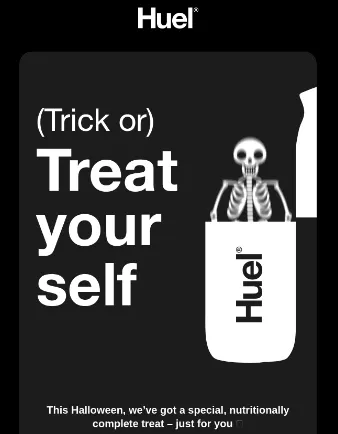
Huel is a meal replacement and medical nutrition manufacturer.
Often, you see a lot of sophisticated methods to increase customer loyalty. But sometimes the most surprising and impressive thing is a simple "Seriously, thanks for printing with us.” This is exactly how Smartpress addressed its customers.
This example clearly shows the power of creativity, which is not about doing something better than others but about doing things differently than others. It's as simple as offering fruit at a dessert fair.
Monitor industry trends and innovations for situational content
Retention marketing does not exist in a vacuum; it lives in the real world. Read the news, watch industry trends, and research your competitors. You should look for inspiration from a variety of sources. Now, I'd like to mention some not-so-obvious things that can be used to create interesting content:
- Memories and emotions. You are not limited to only pleasant ones; the key is to evoke a reaction from the reader. Another idea is to create your own information occasion that you can share with your subscriber, such as the day our correspondence started.
- Philosophy and art. These topics can be a starting point for thought-provoking and reflective newsletters.
- Tales, allegories, and storytelling. They allow us to communicate complex concepts or ideas through simple and interesting stories. For example, you can talk about the benefits of a product through a series of features or a success story about one of your customers.
- Graphic stories. Creating interesting graphic stories or comics that convey your message can be an original way to attract attention and keep customers engaged.
- Interactivity and challenges. Overcoming challenges releases endorphins. So help your customers feel good by creating puzzles, quests, or games.
By using situational content, you can create newsletters that are almost automatically perceived as relevant and engaging to your audience. However, you need to respond quickly to mass events and trends.
First, it is easier to get noticed when the information space is not oversaturated, and second, there is a possibility that yesterday's trend will become tomorrow's anti-trend.
At the same time, it is possible to create situational content without massive use by others. For example, LEGO congratulated Michelle Yeoh on winning the Oscar for Best Actress in the film Everything Everywhere All at Once.
And this is great for several reasons.
Yeoh is the first Asian actress to win the Lead Actress award. During her speech at the Los Angeles ceremony, she said, "For all the little boys and girls who look like me watching tonight, this is a beacon of hope and possibilities."
So the chain of communication between Lego, a company that helps develop creativity in children around the world, and this event is quite natural.
The movie itself became a topic of discussion for a long time, but LEGO was one of the few, if not the only one, to interpret it in this way. This kind of brand behavior builds a positive reputation for the brand among its audience and also among those who do not directly interact with the product.
Conclusions
- To create creative emails that retain customers, focus on connecting emotionally with subscribers, personalizing your emails, and providing creative brand reinforcement.
- Use services that collect the best emails to get inspiration for your own emails.
- Identify what makes interesting emails interesting and use it in your own emails. It can be design elements or topics.
- Stay on top of trends and competitors and use situational content.
- For added interest, your content can be based on:
- memories and emotions;
- thought-provoking philosophy and art;
- tales, allegories, and storytelling;
- vivid graphic stories or comics;
- interactivity and challenges that bring joy to readers.
Related Articles
How to Set Up Consent Mode in GA4 on Your Website with Google Tag Manager
Let's explore how to properly integrate consent mode in GA4, configure it for effective data collection, and at the same time comply with GDPR and other legal regulations
Display Advertising Effectiveness Analysis: A Comprehensive Approach to Measuring Its Impact
In this article, I will explain why you shouldn’t underestimate display advertising and how to analyze its impact using Google Analytics 4
Generative Engine Optimization: What Businesses Get From Ranking in SearchGPT
Companies that master SearchGPT SEO and generative engine optimization will capture high-intent traffic from users seeking direct, authoritative answers
